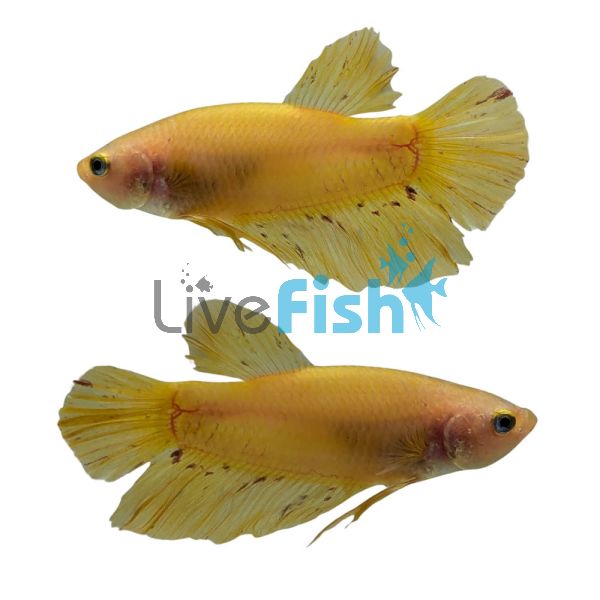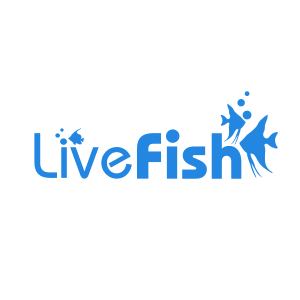Male Shortfin Yellow Vanda Betta 5cm
Male Shorten Yellow Vanda Betta
The Male Shortfin Yellow Vanda Betta is a strikingly beautiful and often hard-to-find variation of the betta splendens, prized for its vibrant yellow coloration and streamlined body shape. This variety is especially popular among collectors and hobbyists seeking to add a unique and elegant centerpiece fish to their aquariums. Unlike the more common long-finned betta strains, the Shortfin Yellow Vanda Betta has a sleek and compact body, allowing for greater agility and activity.
The Yellow Vanda Betta displays a brilliant yellow base colour that shines brightly under aquarium lighting. This vivid yellow is often contrasted by subtle hues of white or black along the fins, giving them a radiant, eye-catching appearance. The shortened fins give this fish a more naturalistic, wild-type look, while still offering the same stunning vibrancy associated with domesticated bettas.
Just like all betta fish, Yellow Vanda Bettas thrive in well-maintained aquariums with adequate filtration and appropriate water parameters. They are best kept as solitary fish in smaller tanks or with carefully selected tank mates in larger community setups. Breeding these bettas can be a rewarding project for enthusiasts, though ensuring genetic quality and colour vibrancy requires selective breeding practices.
Tank Recommendations for your Male Shortfin Yellow Vanda Betta
The ideal tank size for a single yellow vanda betta is at least 40 litres. A well-planted tank with plenty of hiding places, such as caves and driftwood, is recommended to provide the Betta with a sense of security. The water should be kept at a temperature of 24-28°C, with a pH of 6.5-7.5. There is a common misconception that betta fish can be kept in small bowls or cups, however, these are fish that need clean, well-maintained water. Whilst they can tolerate minor fluctuations in water quality, they do require proper filtration and warm water.
Suitable Tank Buddies
Yellow vanda betta are aggressive towards other male Bettas and other fish with long, flowing fins. Therefore, it's best to keep them with peaceful, non-aggressive species.
Usually Compatible
Small, peaceful species such as neon tetras, cherry barbs, corydoras, and guppies.
Sometimes Compatible
Fast-moving or semi-aggressive species such as zebra danios, harlequin rasboras, and small rasboras may be kept with caution as they can sometimes nip at the fins of Bettas.
Rarely Compatible
Larger, aggressive species such as cichlids, angelfish, and larger tetras should be avoided, as they may attack or intimidate the Betta.
Feeding your Male Shortfin Yellow Vanda Betta
In the wild, bettas feed on small insects and crustaceans. In captivity, they can be fed a variety of foods, including high-quality flakes, pellets, and frozen foods such as brine shrimp and bloodworms. It's best to feed them small meals throughout the day, as they have small stomachs. Bettas are known for their unique feeding behaviour, which involves coming to the surface of the water and gulping down the food, which is super fun to watch. Quite commonly, these fish can be trained to hand-feed or take food directly from tweezers.
| Scientific Name | Betta splendens |
|---|---|
| Care Level | Easy |
| Common Names | Yellow Vanda Betta, Shortfin Yellow Vanda Betta, Plakat Yellow Vanda Betta |
| Diet | Carnivore |
| Fish Family | Osphronemidae |
| Lifespan (years) | 4 |
| Max. Length (cm) | 7 |
| Min. Tank Volume (l) | 40 |
| Origin | Thailand & Cambodia |
| Sociability | Peaceful |
| Venomous | No |
| Water Conditions | 24-28° C, pH 6.0-7.5 |
| Plant Safe | Yes |




